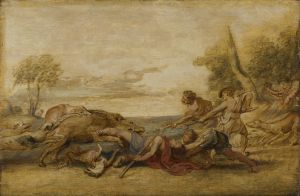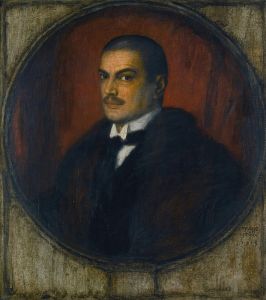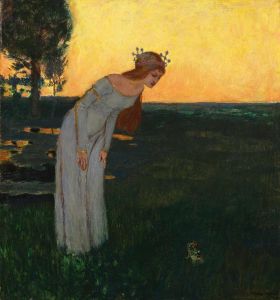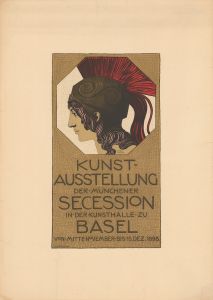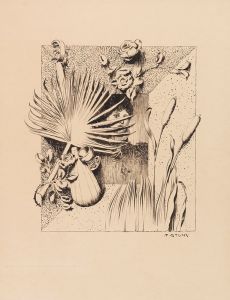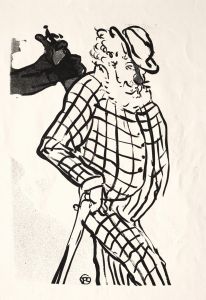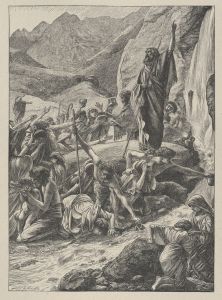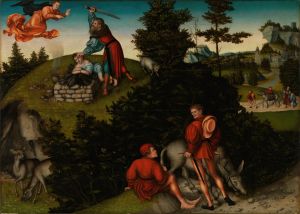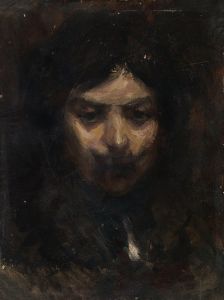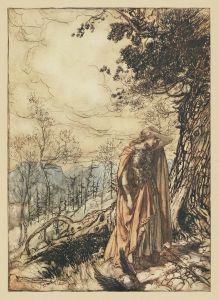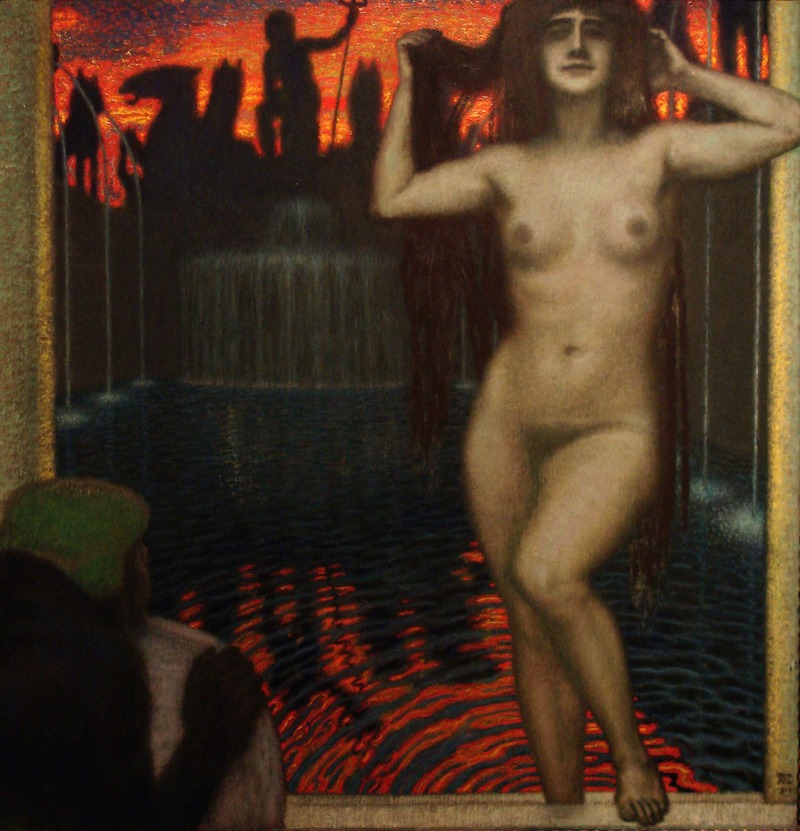
Bathsheba
A hand-painted replica of Franz von Stuck’s masterpiece Bathsheba, meticulously crafted by professional artists to capture the true essence of the original. Each piece is created with museum-quality canvas and rare mineral pigments, carefully painted by experienced artists with delicate brushstrokes and rich, layered colors to perfectly recreate the texture of the original artwork. Unlike machine-printed reproductions, this hand-painted version brings the painting to life, infused with the artist’s emotions and skill in every stroke. Whether for personal collection or home decoration, it instantly elevates the artistic atmosphere of any space.
Franz von Stuck's painting "Bathsheba" is a notable work by the German symbolist artist, created in 1908. Stuck, who was a prominent figure in the Munich Secession movement, is known for his evocative and often mythological themes, and "Bathsheba" is no exception. The painting depicts the biblical figure Bathsheba, a subject that has been explored by many artists throughout history due to its rich narrative and emotional depth.
The story of Bathsheba originates from the Hebrew Bible, specifically the Second Book of Samuel. Bathsheba was the wife of Uriah the Hittite and later became the wife of King David. The narrative describes how King David, from his rooftop, saw Bathsheba bathing and was struck by her beauty. This led to a series of events that included adultery, the arranged death of her husband Uriah, and Bathsheba's subsequent marriage to David. This story has been interpreted in various ways, often focusing on themes of power, temptation, and morality.
In Stuck's interpretation, Bathsheba is portrayed with a focus on her sensuality and allure, consistent with the artist's symbolist style, which often emphasized the mystical and the erotic. The painting captures Bathsheba in a moment of introspection, highlighting her beauty and the intimate setting. Stuck's use of light and shadow, as well as his attention to detail, contribute to the painting's atmospheric quality, drawing the viewer into the narrative.
Franz von Stuck was known for his ability to blend classical themes with modern techniques, and "Bathsheba" exemplifies this approach. The painting reflects Stuck's interest in the human form and his skill in rendering it with both realism and idealism. The composition is carefully balanced, with Bathsheba's figure positioned in a way that draws attention to her expression and the subtle emotions conveyed through her posture.
Stuck's work, including "Bathsheba," was influential in the development of early 20th-century art, particularly in Germany. His paintings often explored themes of mythology, allegory, and the human psyche, resonating with the symbolist movement's focus on the spiritual and the mysterious. "Bathsheba" is a testament to Stuck's ability to capture complex narratives and emotions within a single image, making it a significant piece in his oeuvre.
The painting is housed in the Städtische Galerie im Lenbachhaus in Munich, which holds a substantial collection of Stuck's works. This institution is dedicated to preserving and showcasing the art of the Munich Secession and other related movements, providing context for Stuck's contributions to art history.
Overall, "Bathsheba" by Franz von Stuck is a compelling example of symbolist art, reflecting the artist's mastery of technique and his engagement with timeless themes. The painting continues to be studied and appreciated for its artistic merit and its place within the broader narrative of art history.





